Discover 20 hidden attractions, cool sights, and unusual things to do in St. John's (Canada). Don't miss out on these must-see attractions: Signal Hill, Cape Spear, and Suncor Energy Fluvarium. Also, be sure to include Cabot Tower in your itinerary.
Below, you can find the list of the most amazing places you should visit in St. John's (Newfoundland and Labrador).
Table of Contents
Signal Hill
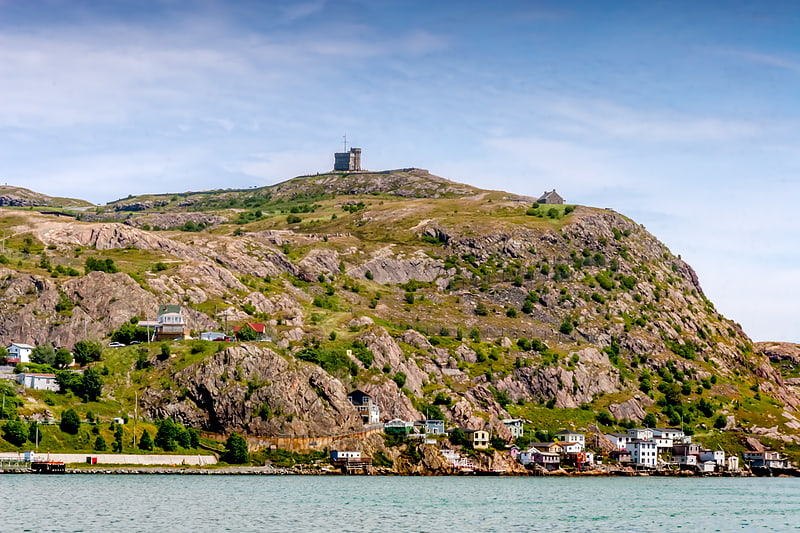
Military landmark with trails and tours. Signal Hill is a hill which overlooks the city of St. John's, Newfoundland and Labrador, Canada. Mostly a National Historic Site, adjacent to is the largely encaved museum of Johnson Geo Centre and its associated park. The highest point, Ladies' Lookout, above Cabot Tower, is 167 metres high. The community of The Battery lies on the slope of the hill overlooking the Harbour. On 12 December 1901, the first transatlantic wireless transmission was received by Guglielmo Marconi, to its abandoned fever hospital.
Due to its strategic placement overlooking the Narrows, the only entrance to the harbor, fortifications date back to the mid 17th century.
Memorial University of Newfoundland and Labrador has a campus on the lower slopes, in the former Battery Hotel, and is also now the owner of the Johnson Geo Centre.[1]
Address: 230 Signal Hill Rd, A1C 5M9 St. John's
Cape Spear
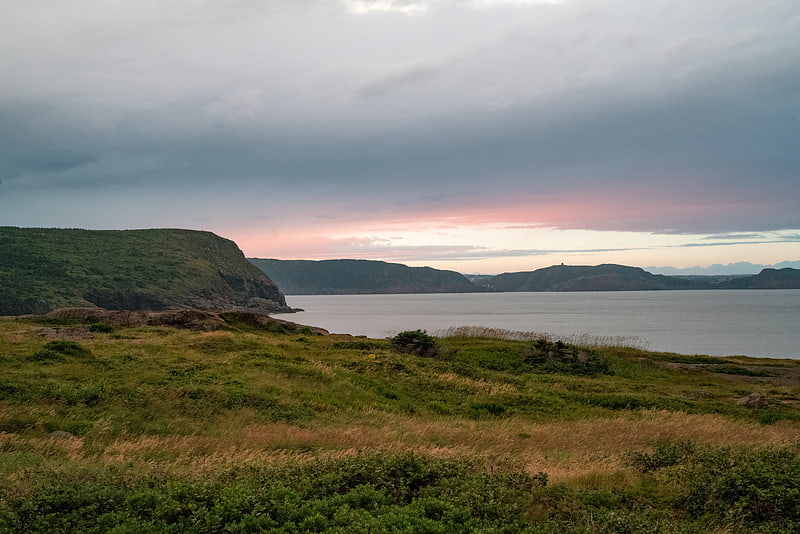
Headland in Newfoundland and Labrador, Canada. Cape Spear is a headland located on the Avalon Peninsula of Newfoundland near St. John's in the Canadian province of Newfoundland and Labrador. At a longitude of 52°37' W, it is the easternmost point in Canada and North America, excluding Greenland.
Cape Spear is within the municipal boundaries of the city of St. John's, located about 12 kilometres (7.5 mi) from downtown St. John's.
The Portuguese named this location Cabo da Esperança, meaning "cape of hope", which became Cap d'Espoir in French and finally "Cape Spear".
Cape Spear is the trailhead/trail end for two components of the East Coast Trail.[2]
Suncor Energy Fluvarium
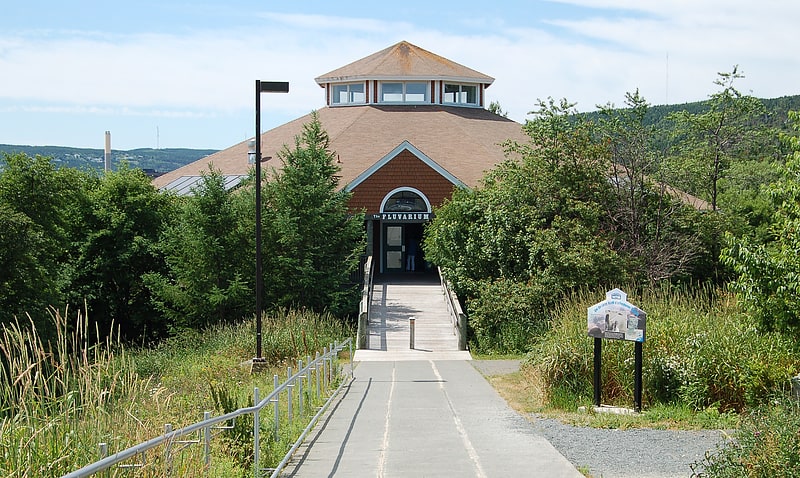
Streamside aquarium and education center. The Fluvarium, meaning "windows on a stream", is a public centre for environmental education, located in St. John's, Newfoundland and Labrador, and is operated by the Quidi Vidi/Rennie's River Development Foundation.
The lowest level of the Fluvarium features an underwater view of Nagle's Hill Brook through nine large viewing windows. Visitors can observe brown trout and salmon living in their natural habitat. The center also has a series of natural water aquariums and terrariums that showcase fish and amphibian species found throughout Newfoundland and Labrador.[3]
Address: 5 Nagle's Pl, A1B 2Z2 St. John's
Cabot Tower
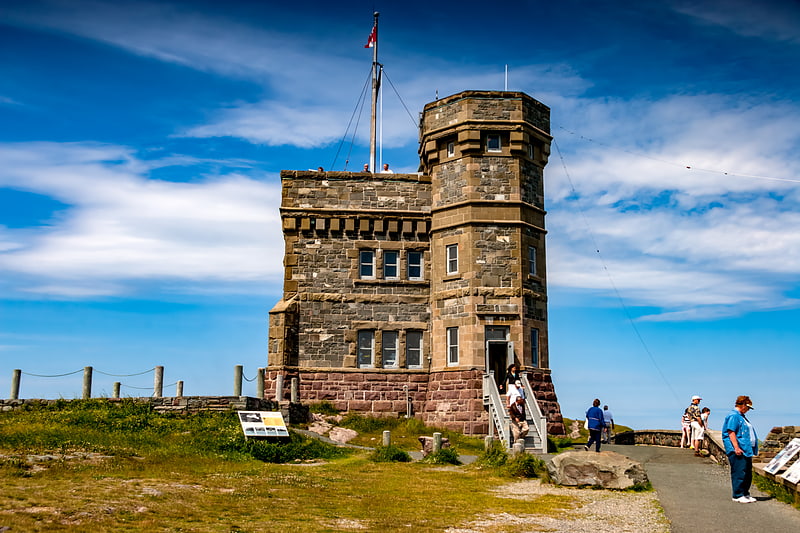
Historical landmark in St. John's, Newfoundland and Labrador. Cabot Tower is a tower in St. John's, Newfoundland and Labrador, situated on Signal Hill. Construction of the tower began in 1898 to commemorate the 400th anniversary of John Cabot's discovery of Newfoundland, and Queen Victoria's Diamond Jubilee.
In 1901, Guglielmo Marconi received the first trans-Atlantic wireless message at a position near the tower, the letter "S" in Morse Code sent from Poldhu, Cornwall, United Kingdom. Cabot Tower is now the centre of the Signal Hill National Historic Site of Canada, with walking trails and an interpretation centre.[4]
Address: Signal Hill Road, A1A 1B2 St. John's
Johnson Geo Centre
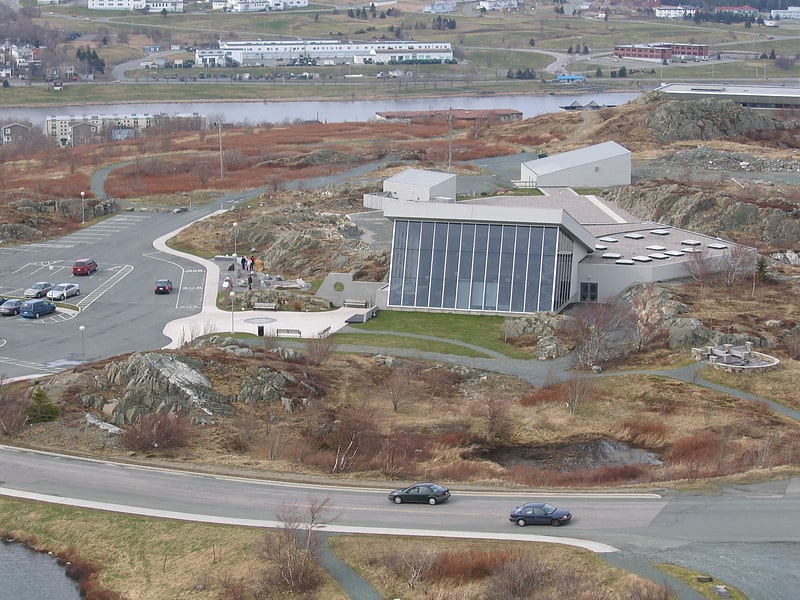
Museum in St. John's, Newfoundland and Labrador. The Johnson Geo Centre is a geological interpretation centre located on Signal Hill in St. John's, Newfoundland and Labrador, Canada. The museum is named for philanthropist Paul Johnson and opened in 2002.[5]
Address: 175 Signal Hill Road, A1A 1B2 St. John's
The Rooms
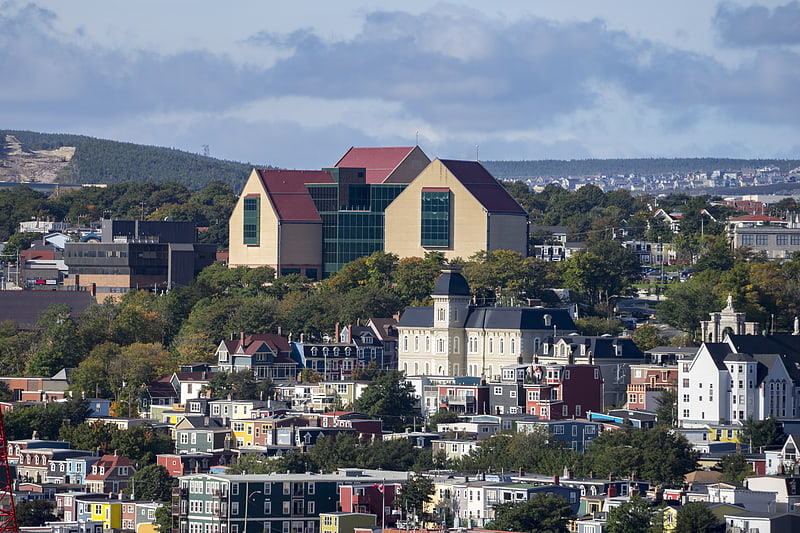
Art gallery in St. John's, Newfoundland and Labrador. The Rooms is a cultural facility in St. John's, Newfoundland and Labrador, Canada. The facility opened in 2005 and houses the Art Gallery of Newfoundland and Labrador, the Provincial Archives of Newfoundland and Labrador and the Provincial Museum of Newfoundland and Labrador.
The facility was constructed on a hill overlooking the port city, at a historic location once occupied by Fort Townshend.[6]
Address: 9 Bonaventure Ave, A1C 5P9 St. John's
Fort Amherst Lighthouse
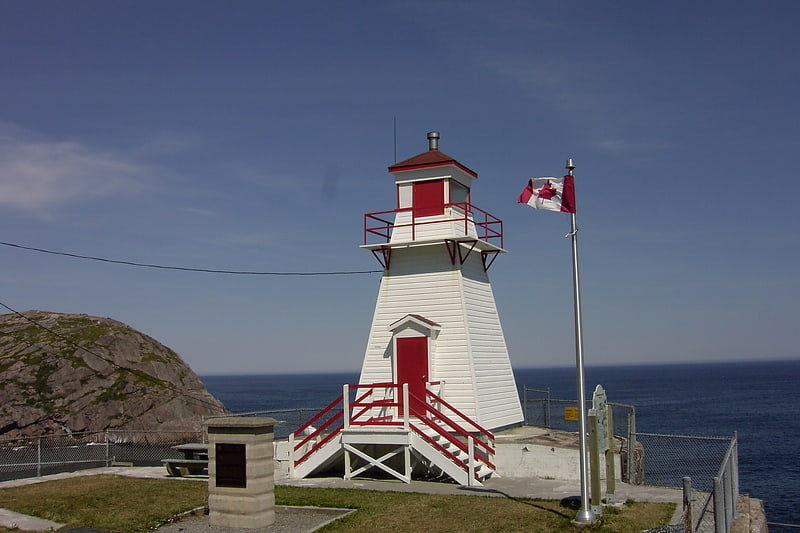
Lighthouse. Fort Amherst Lighthouse, also known as the Fort Amherst Light, is a lighthouse in Fort Amherst, St. John's, Newfoundland and Labrador. The first lighthouse at Fort Amherst was established in 1813, with the current lighthouse being the third to stand at the site. The lighthouse was decommissioned in 1982 and declared a heritage site in 2014. It is currently protected and the buildings around the lighthouse are owned by the family of a former keeper.[7]
Basilica of St. John the Baptist
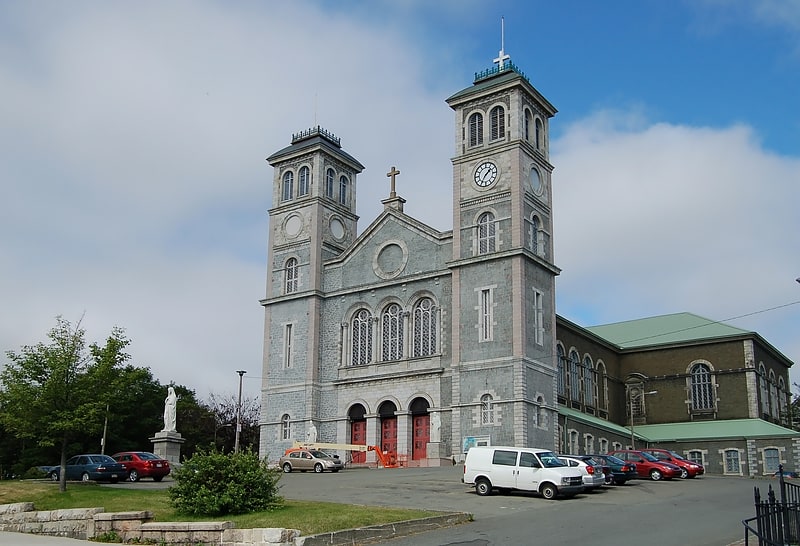
Basilica in St. John's, Newfoundland and Labrador. The Basilica-Cathedral of St. John the Baptist in St. John's, Newfoundland and Labrador is the metropolitan cathedral of the Roman Catholic Archdiocese of St. John's, Newfoundland and the mother church and symbol of Roman Catholicism in Newfoundland. The building sits within the St. John's Ecclesiastical District, a National Historic District of Canada.
The Basilica-Cathedral was the largest building project to its date in Newfoundland history. Construction lasted from the excavation of the ground in May 1839, through the laying of the cornerstone in May 1841, until the completion and consecration on September 9, 1855. At this time, it was the largest church building in North America and remains the second largest church in Canada after Saint Joseph's Oratory in Montreal and the largest cathedral church in Canada. The Basilica-Cathedral is one of the few buildings in St. John's to survive the Great Fire of 1892.
On October 17, 2007, Bishop Martin Currie of the Diocese of Grand Falls was appointed archbishop of St. John's. He assumed his position on November 30, 2007, and retired on 29 January 2019. On December 12, 2018, Bishop Peter Hundt of the Roman Catholic Diocese of Corner Brook and Labrador was appointed archbishop of St. John's. He took canonical possession of the diocese on 29 January 2019.[8]
Address: 200 Military Road, A1C 2E8 St. John's
Colonial Building
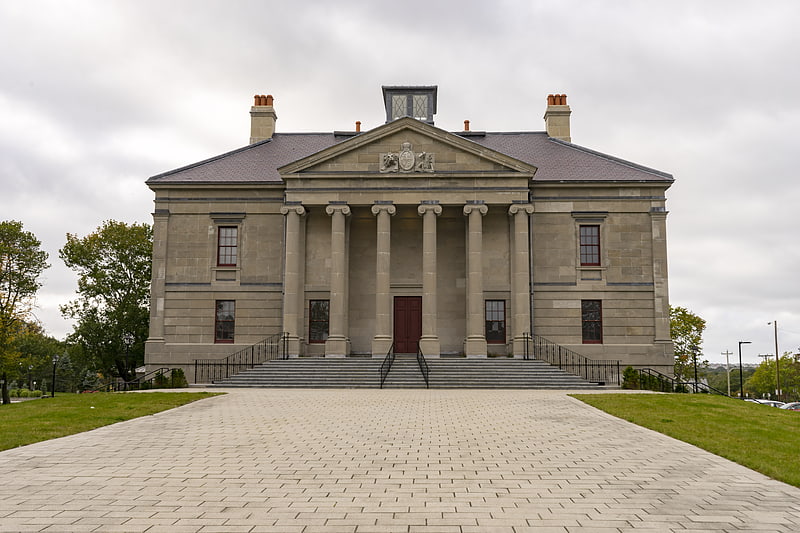
Building in St. John's, Newfoundland and Labrador. The Colonial Building is a historic government building located in St. John's, Newfoundland and Labrador, Canada. The building was the home of the colonial and later provincial Newfoundland government and the House of Assembly from January 28, 1850 to July 28, 1959. In 1974, it was declared a Provincial Historic Site.
In 1832 when the Colony of Newfoundland governed itself by representative government there was not a formal building assigned to house the legislature. The first home of the Legislature was a tavern and lodging house on Duckworth Street owned and operated by a Mrs. Mary Travers. The stay was brief as in the legislature's haste and inexperience it forgot to vote approval for the funds to pay rent. The first building was destroyed in city fire of 1846. For the next seventeen years they would meet in various temporary quarters including the local courthouse. In 1846 an act was approved authorizing the construction of the Colonial Building as a permanent home.
On May 24, 1847, the cornerstone was laid by the Governor, Major-General Sir John Gaspar Le Marchant. The official opening of the Colonial Building took place on January 28, 1850, by Governor Le Marchant for the second session of the House's fourth general assembly.[9]
Address: Military Rd & Bannerman Rd, St. John's
George Street United Church
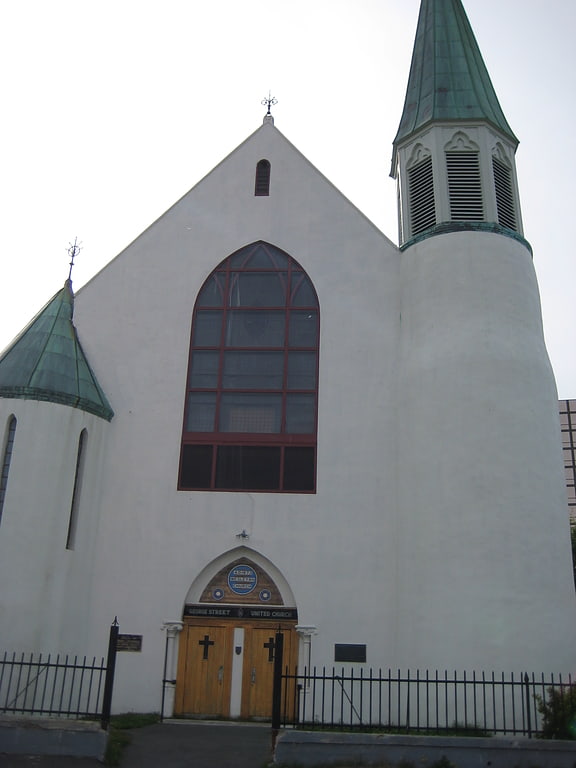
George Street United Church is the oldest extant Methodist church building in St. John’s, Newfoundland and Labrador. Designed by Elijah Hoole, it is an example of a modified Gothic Revival church.
Constructed of local stone quarried from the Southside Hills in St. John's, the entire building is sheathed in concrete. Despite this, many typical Gothic elements remain intact including the pointed arch, lancet windows, and the large stained glass windows. Furthermore, the interior of this church is architecturally valuable for its well-preserved woodwork. The exposed timber hammerbeam roof of the nave is a typical Gothic element.
The church is designated as a Heritage Structure due to its architectural and historical value.
The city's oldest Methodist church congregation and the first Methodist church building (1815), later destroyed by fire, was Gower Street Methodist (now United) church; its current structure was also designed by Elijah Hoole.[10]
Address: 130 George Street West, St. John's
Railway Coastal Museum
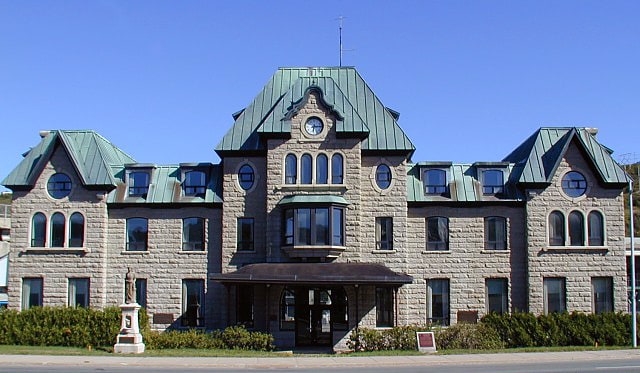
Museum in St. John's, Newfoundland and Labrador. The Railway Coastal Museum is a transport museum located in St. John's, Newfoundland and Labrador, Canada. It is located in the historic Newfoundland Railway terminal on Water Street and contains exhibits detailing the history of the Newfoundland Railway and the history of coastal water transportation in the province.
The building was designated a National Historic Site in 1988 for its role in commemorating the important role played by the Newfoundland Railway in the social, economic and political history of the province. It was also designated a Heritage Railway Station in 1990.
The museum has 40 themed exhibits, a virtual museum, artwork and displays highlighting the history of the railway beds in Newfoundland and Labrador.
The museum opened in 2003 on a grant from the Johnson Family Foundation, which later turned over the museum to the City of St. John's. The museum is also noteworthy as "Mile Zero" of the Trans-Canada Trail. In 2020, it was announced by St. John's City Council that the museum would close due to budget cuts. In 2021, it was announced that the museum would be purchased by the Genesis Coworking Centre affiliated with the Memorial University-owned incubator Genesis Centre. The Railway Coastal Museum will continue on a seasonal basis.
With the closure of the Newfoundland Railway, the terminal is no longer connected to any tracks, which were all torn up and the rails put to other uses. The museum does not own or display any rolling stock as it is now surrounded by development.
The museum is affiliated with: CMA, CHIN, and Virtual Museum of Canada.
Locations on the island with cars:
- Port aux Basques - cars and station
- Corner Brook - cars at Railway Society Of Newfoundland
- Bishop's Falls - cars
- Carbonear - museum
- Avondale - track used for trolleys
- Trinity Train Loop (Trinity) - functional section of track and museum
- Lewisporte - train cars
- Whitbourne - station
Address: 495 Water St, A1E 6B5 St. John's
Mary Brown's Centre
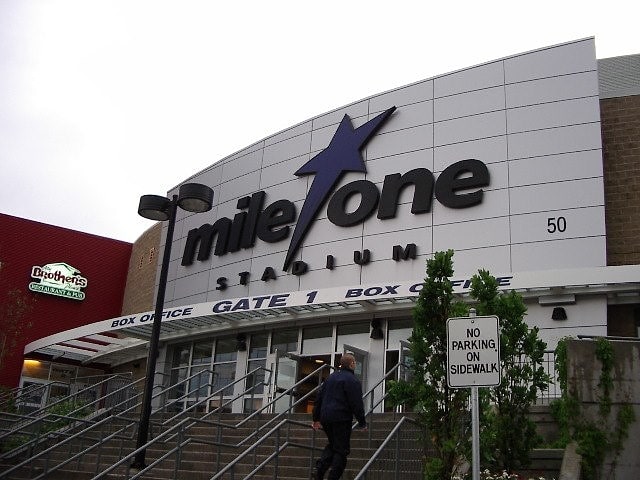
Arena in St. John's, Newfoundland and Labrador. Mary Brown's Centre is an indoor arena and entertainment venue located in downtown St. John's, Newfoundland and Labrador, Canada. The arena opened in May 2001, replacing Memorial Stadium. At full capacity the arena can seat 7,000 people.
The arena is the home of the Newfoundland Growlers of the ECHL[12]
Address: St. John's, 50 New Gower Street
Quidi Vidi Lake
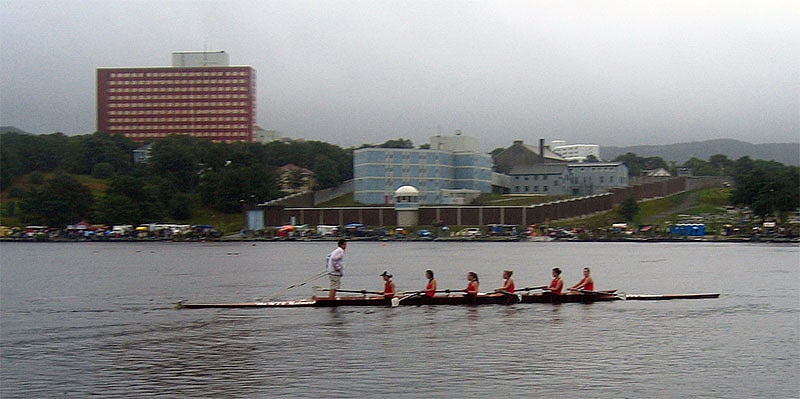
Body of water in Newfoundland and Labrador, Canada. Quidi Vidi Lake is a 1,600 m long body of water located at the east end of the city of St. John's, Newfoundland, Canada. Local people commonly pronounce its name as kiddy viddy. Water flows into the lake from the Rennies and Virginia Rivers, along with smaller streams, and then into the sea through Quidi Vidi harbour. The lake has a long history of hosting sporting events, including the annual Royal St. John's Regatta, said to be the oldest continuous sporting event still held in North America. The former Pepperrell Air Force Base was located on the north shore of the lake and a military presence continues in the form of Canadian Forces Station St. John's). The South shore of the Lake has a number of residential and apartment complexes. A number of cultural events are held at Lakeside.
Quidi Vidi Lake has a 3.8-kilometre (2.4 mi) leg of St. John's Grand Concourse walking trail surrounding it. On the north end of the walking trail is a fenced-in outdoor dog park and a skate board park.[13]
National War Memorial
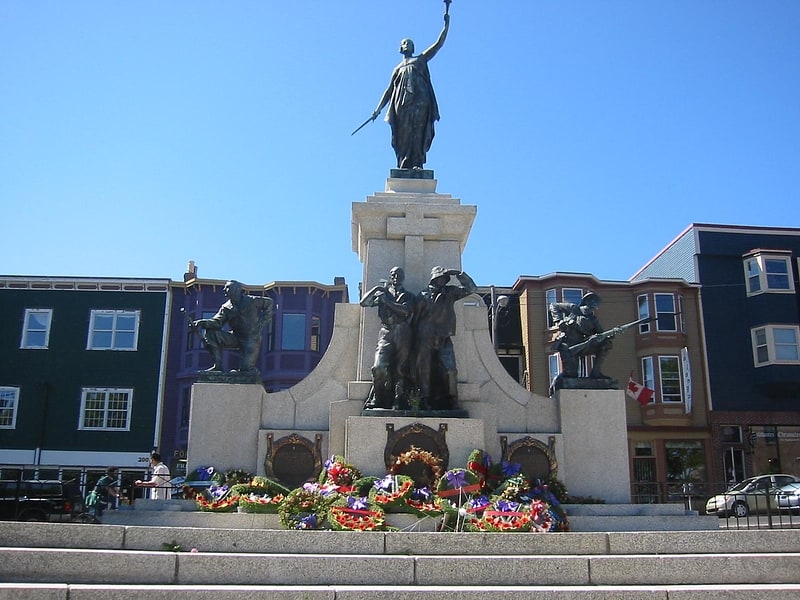
The National War Memorial in Downtown St. John's is the most elaborate of all the post World War I monuments in Newfoundland and Labrador. It was erected at King's Beach on Water Street where, in 1583, Sir Humphrey Gilbert claimed Newfoundland for England. It was formally unveiled on Memorial Day, July 1, 1924 by Field Marshal Douglas Haig, 1st Earl Haig.
The Great War Veterans' Association and the Newfoundland Patriotic Association launched the campaign to have the National War Memorial established. They developed a committee to establish the design and undertake the fund-raising to pay for the proposed memorial. Construction of the memorial was supervised by Lieutenant-Colonel Father Thomas Nangle, the Roman Catholic Padre of Royal Newfoundland Regiment and (Ret) Captain Gerald (Gerry) Whitty[14]
Address: 90 Water St, A1C 1A4 St. John's
Bowring Park

Park in St. John's, Newfoundland and Labrador. Bowring Park is located in the Waterford Valley, St. John's, Newfoundland, Canada. Entrance to the park is via Waterford Bridge Road, passing a sculptured duck pond and a Peter Pan statue.[15]
Address: 305 Waterford Bridge Rd, St. John's
Quidi Vidi

Neighbourhood in St. John's, Newfoundland and Labrador. Quidi Vidi is a neighbourhood in St. John's, Newfoundland and Labrador. The village is adjacent to Quidi Vidi Lake. Quidi Vidi's harbour is known as "The Gut". Located in Quidi Vidi is the Quidi Vidi Battery Provincial Historic Site. The village is home to several small businesses.[16]
Address: 35 Barrows Rd, St. John's
Cathedral of St. John the Baptist
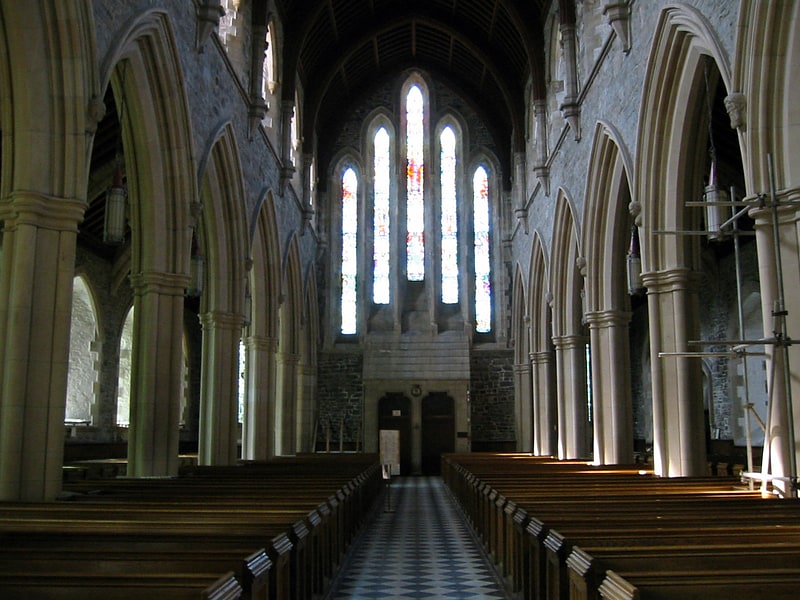
Cathedral in St. John's, Newfoundland and Labrador. The Cathedral of St. John the Baptist is located in the city of St. John's, Newfoundland and Labrador, Canada.
The Anglican parish in the Diocese of Eastern Newfoundland and Labrador was founded in 1699 in response to a petition drafted by the Anglican townsfolk of St. John's and sent to Henry Compton, Bishop of London. In this petition, the people also requested help in the rebuilding of their church, which had been destroyed, along with the rest of the city, in 1696 by the French under the command of Pierre Le Moyne d'Iberville.
During the centuries, at least six wooden churches stood on or near this site; each was destroyed by military operations during the various wars between the French and the British. The British finally won control of eastern North America.[17]
Address: 16 Church Hill, A1C 3Z9 St. John's
Masjid-an-Noor
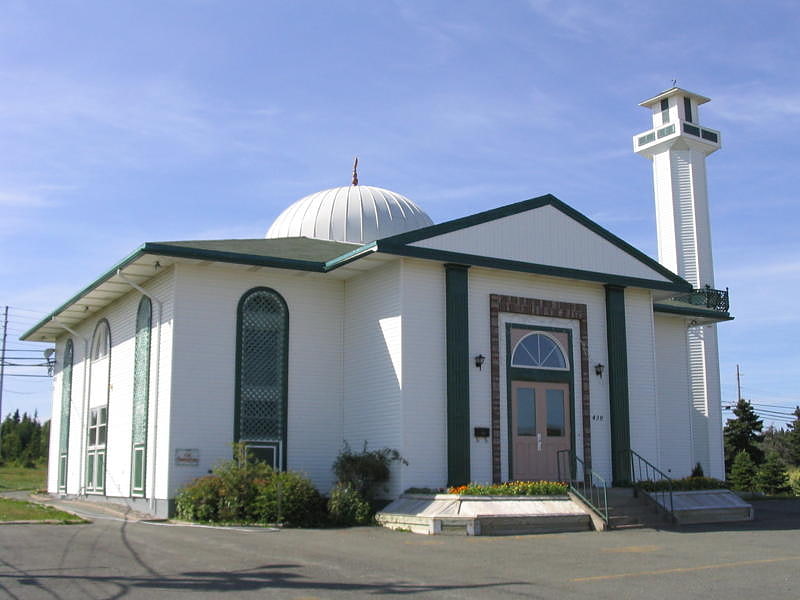
Masjid-an-Noor is the first, and currently only, mosque in the city of St. John's, Newfoundland and Labrador, Canada. The mosque is located in the provincial capital of St. John's, and was built in 1990 by the Muslim Association of Newfoundland and Labrador. A large proportion of the congregation are students or faculty at the Memorial University of Newfoundland.
A 2016 Master's degree thesis has studied the mosque and the role of five-times-daily prayer in the lives of Muslims who have immigrated to Newfoundland.
It is the only mosque in the province. As such has been turned to for reaction to events involving Islam and mosques in the news, such as the March 2019 shootings in Christchurch, New Zealand. In Newfoundland, Masjid-an-Noor held memorial services. An event at St. John's Farmers Market was held to express support for Newfoundland Muslims; some came to the event after hearing of it on CBC News. Messages of support were also delivered to the mosque itself. It is the most eastern mosque in Canada.[18]
St. Pius X Church
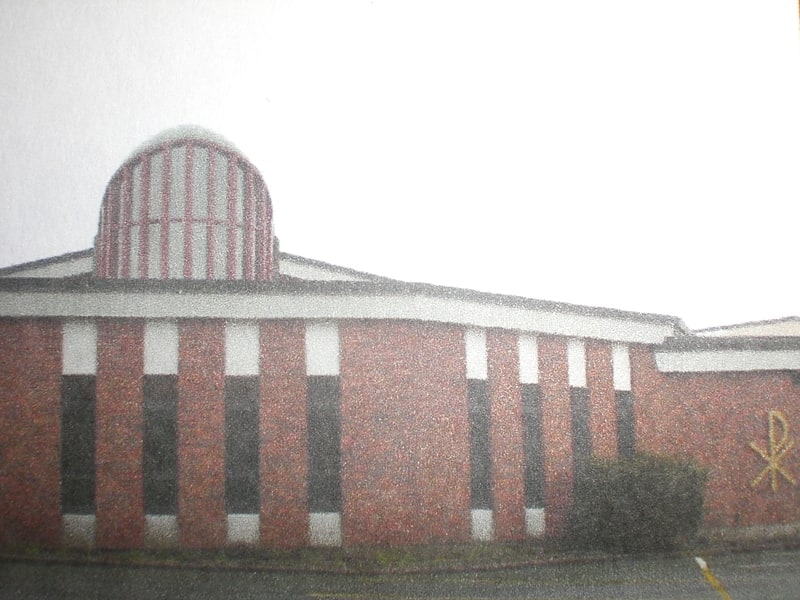
Catholic church in St. John's, Newfoundland and Labrador. St. Pius X Church is a Roman Catholic Parish church in the Churchill Park area of St. John's, Newfoundland and Labrador. It is a staffed by the Society of Jesus and is next to Gonzaga High School. It is situated on Smithville Crescent off Elizabeth Ave.[19]
Address: 16 Smithville Cres, St. John's
St. Patrick's Church
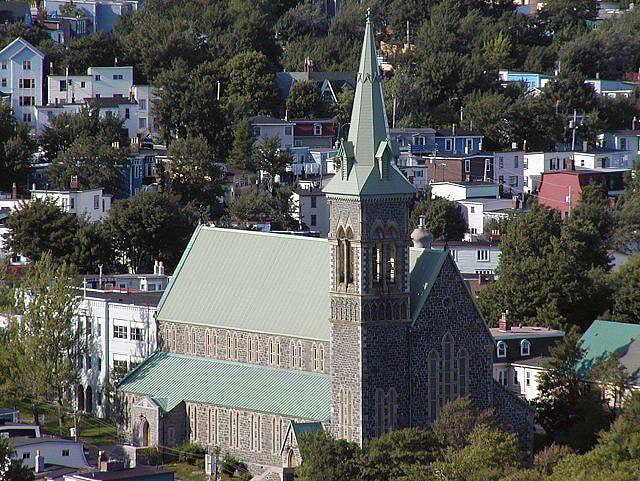
Catholic church in St. John's, Newfoundland and Labrador. Saint Patrick's Church is a Roman Catholic church in St. John's, Newfoundland, Canada.[20]
Address: 6 Patrick St, St. John's